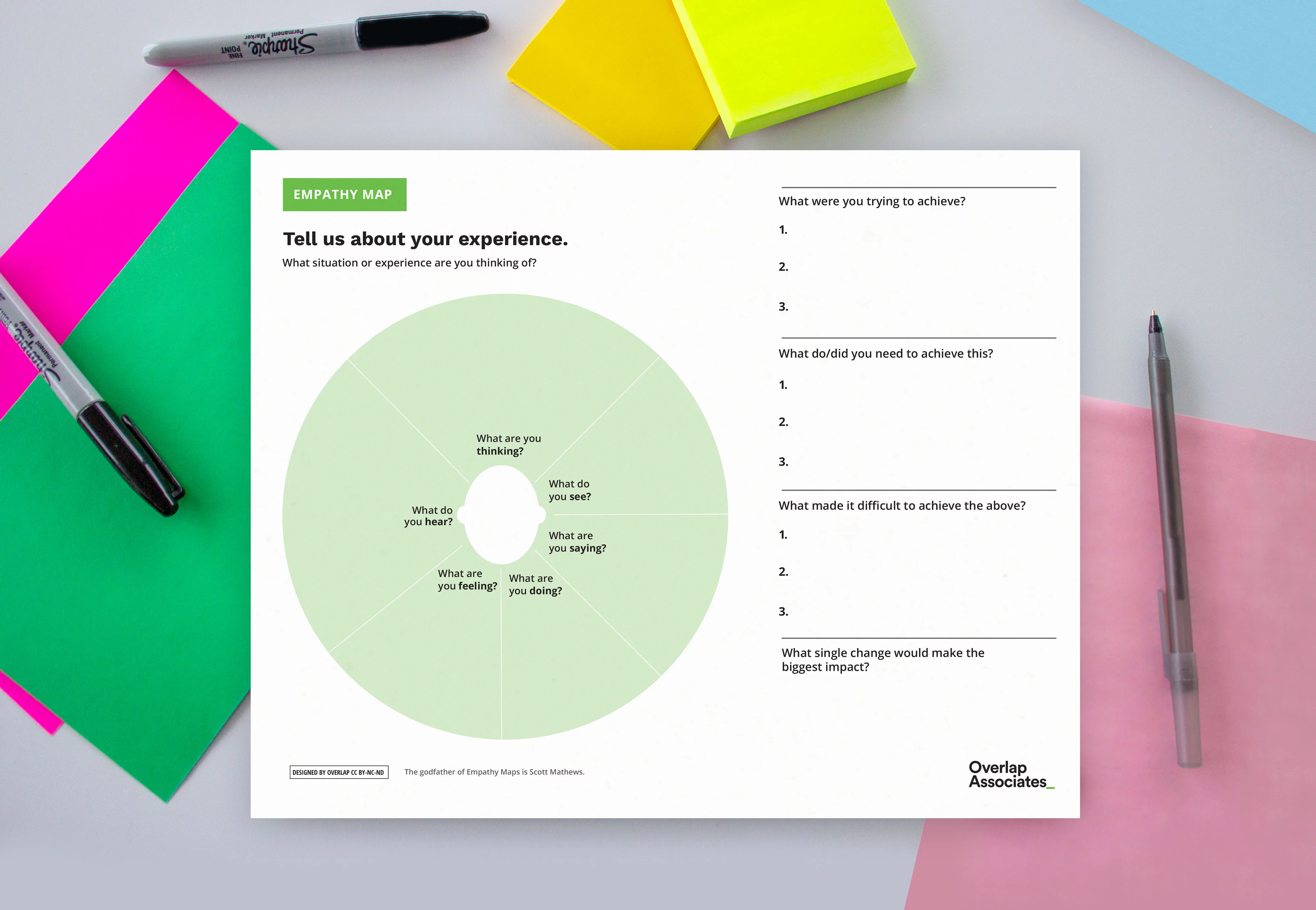The first realization most people have when exposed to design thinking is that it often has little to do with anything visual.
Really, it’s a form of problem-solving through deep reflection.
In the design thinking framework, having a strong design sense could just mean having a keen understanding of human behaviour and emotions. Ultimately, it’s about empathy, and empathy is a core strength for most charitable organizations. A charity can’t serve its community if it doesn’t deeply understand the problems the community faces.
Still, it helps to put this strength in context.

Source: Interaction Design Foundation
At Imagine Canada’s Summit event in Toronto on May 2nd, Capacity Canada, a national charity whose mission is “Bringing together the ideas, people and resources that fuel social innovation,” ran a design thinking workshop called “Designing for Social Good.” In it, attendees were asked to interview each other about major changes they were experiencing in life and work using an empathy map. For example, we asked each other what thoughts, feelings, and behaviours the experience elicited.
These conversations were uncomfortable at the beginning, but ultimately very revealing. Probing one of my fellow attendees led him to reveal details and feelings about his experiences that he hadn’t considered. He admitted how overwhelmed he was with a new project he was leading in his organization, and he feared the possibility of his staff members, whom he could see were running on empty, burning out. But he also spoke passionately about why he believed in this project — something he hadn’t done in months.

In a real-world setting, this deep insight is invaluable.
Again, most charities aren’t new to empathetic, deep, and uncomfortable conversations. In many cases, the very fact that someone is engaging with your charity reveals their most formative values and experiences. So this process should come naturally. But that doesn’t mean we’re off the hook.
In many cases, it might be internal struggles that are unearthed. Some charitable sector professionals might understand and relate to the deepest struggles their communities face, but know very little of their own co-workers’ day-to-day struggles.
The result could also be an uncomfortable pivot. Maybe your organization was too confident in its understanding of the problem, and wasn’t asking the right questions.
This two-way nature of design thinking is often overlooked. As you empathize with the people you serve, you learn more about yourself.
Once we completed our empathy map interviews, the room reflected on the process. It was incredible to hear how much we had learned about each other in such a short time through deeply understanding one experience. My favourite insight came from Jerry Smith:
“My grandma used to tell me, ‘Jerry, the Lord gave you two ears and one mouth for a reason.’”




